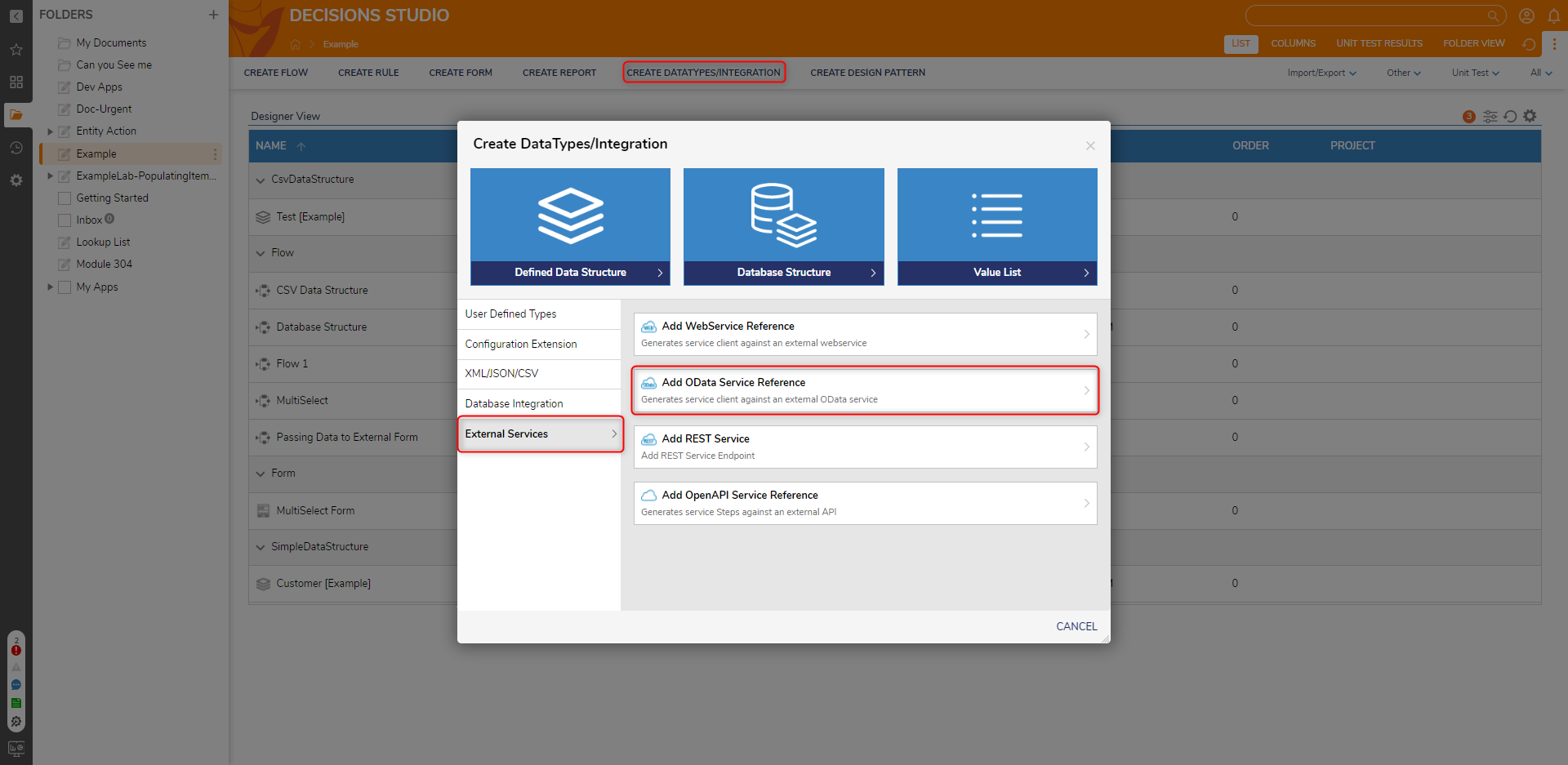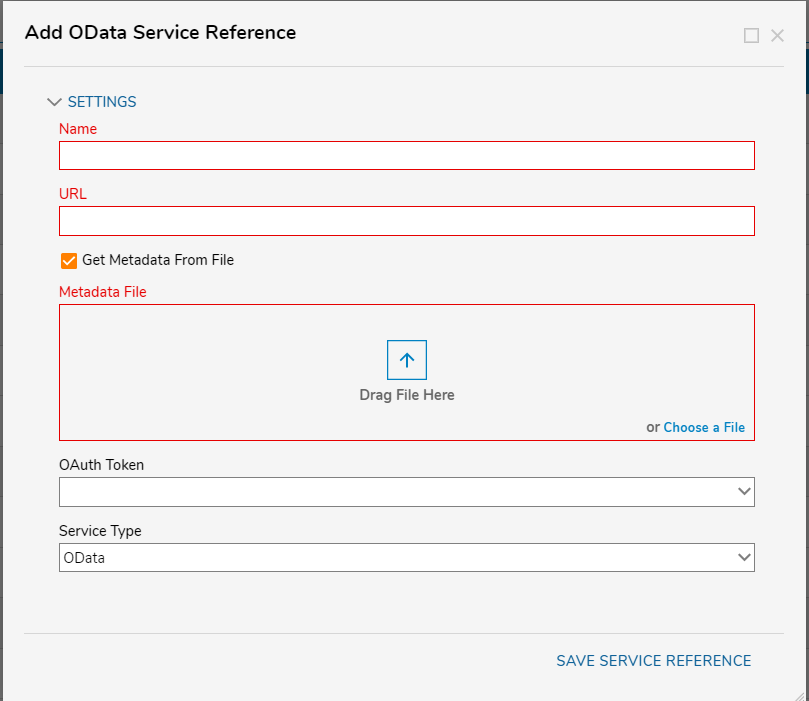Overview
The Open Data Protocol (OData) is a service that standardizes the creation and consumption of REST API calls in a simple way. OData removes the need to define request and response headers, status codes, HTTP methods, URL conventions, media types, workload formats, query options, etc.
Example
- In a Designer Project, click CREATE DATATYPES/INTEGRATIONS from the Global Action Bar.
- In the Create DataTypes/Integration window, click External Services and select Add OData Service Reference.

- When the Add OData window appears, provide a Name for the service.
- A URL must be provided, which typically redirects to a metadata document (i.e. a WSDL file) that defines the service reference. The Get Metadata From File
OData authentication is done entirely via OAuth. To learn more, see OAuth token. - The Service Type option, by default, will have OData selected. The Dynamics AX option in this dropdown list includes features for this specific use case of generic OData. Once the configurations are complete, click SAVE SERVICE REFERENCE.

Setting Description Name The name of the service reference as it appears in Decisions. URL The URL used to pull the metadata needed to access the service Get Metadata from File Allows uploading an OData metadata file to generate an OData service reference OAuth Token The OAuth token used for authentication Service Type Defines the service used for OData. - Once the Service Reference is saved, Decisions will process the integration and provide Flow steps based on the service definition of the metadata URL. In the Designer Project, click CREATE FLOW to create a new Flow to use the steps.
- In the Toolbox panel, navigate to INTEGRATION > ODATA > [NAME OF SERVICE] to locate the steps. Be sure that the token is refreshed before running the steps.

For further information on Integrations, visit the Decisions Forum.